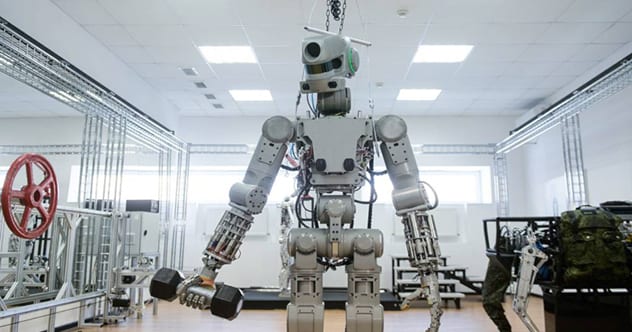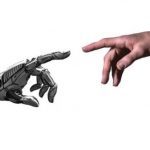 Weird Stuff
Weird Stuff  Weird Stuff
Weird Stuff  Our World
Our World 10 Ways Your Christmas Tree Is More Lit Than You Think
 Movies and TV
Movies and TV The 10 Coolest Stars to Set Sail on The Love Boat
 History
History 10 Things You Didn’t Know About the American National Anthem
 Technology
Technology Top 10 Everyday Tech Buzzwords That Hide a Darker Past
 Humans
Humans 10 Everyday Human Behaviors That Are Actually Survival Instincts
 Animals
Animals 10 Animals That Humiliated and Harmed Historical Leaders
 History
History 10 Most Influential Protests in Modern History
 Creepy
Creepy 10 More Representations of Death from Myth, Legend, and Folktale
 Technology
Technology 10 Scientific Breakthroughs of 2025 That’ll Change Everything
 Weird Stuff
Weird Stuff Ten Bizarre Facts About The Doge Meme
 Our World
Our World 10 Ways Your Christmas Tree Is More Lit Than You Think
 Movies and TV
Movies and TV The 10 Coolest Stars to Set Sail on The Love Boat
Who's Behind Listverse?

Jamie Frater
Head Editor
Jamie founded Listverse due to an insatiable desire to share fascinating, obscure, and bizarre facts. He has been a guest speaker on numerous national radio and television stations and is a five time published author.
More About Us History
History 10 Things You Didn’t Know About the American National Anthem
 Technology
Technology Top 10 Everyday Tech Buzzwords That Hide a Darker Past
 Humans
Humans 10 Everyday Human Behaviors That Are Actually Survival Instincts
 Animals
Animals 10 Animals That Humiliated and Harmed Historical Leaders
 History
History 10 Most Influential Protests in Modern History
 Creepy
Creepy 10 More Representations of Death from Myth, Legend, and Folktale
 Technology
Technology 10 Scientific Breakthroughs of 2025 That’ll Change Everything
10 Movie Robots Who Would Pass the Turing Test
First proposed by computer scientist, mathematician, logician, and all-around genius Alan Turing back in 1950, the Turing test has penetrated pop culture unlike pretty much any other method or concept of philosophical inquiry. Also known as the imitation game (the namesake for the 2014 film on Turing’s life), the Turing test is designed to assess a machine’s ability to reason and interact like a human being.
The test is traditionally conducted blind between an interrogator, a person, and a machine. The interrogator deploys a series of questions on his subjects’ habits, interests, likes, and dislikes to try and determine which of their subjects is the machine and which is the person. At the same time, the machine aims to persuade the interrogator of its personhood.
While Turing was right that we would have advanced systems with massive storage capacities by the new millennium, we are nonetheless still years away from a walking, talking A.I. that might pass as a real person. But that hasn’t stopped science-fiction filmmakers, who have used increasingly sophisticated advances in practical and digital technology to bring free-thinking machines to our screens, playing with the boundaries of what artificial intelligence can be. So here are ten movie robots who would pass the Turing test.
Related: 10 Futuristic Things AI And Robots Are Already Doing
10 T-3000: Terminator Genisys (2015)
Everyone loves the original films the best, but neither Terminator’s T-800 (Arnold Schwarzenegger) nor T2’s T-1000 (Robert Patrick) would pass any kind of serious test, whether Turing, driving, or basic sociology. These Terminators are the ultimate killing machine, designed to infiltrate and, well, terminate. But as the universe has developed, Skynet (the series’ villainous artificial superintelligence) has had to innovate to remain ahead of the killing curve.
Enter the T-3000 (Jason Clarke). Unlike most other robots seen in cinema, the T-3000, in some senses, used to be human. Infecting a body and replacing all of its cells with nanomachines, it can imitate every aspect of human behavior, possessing the psychological landscape native to its original host.
Though the T-3000 may easily pass the Turing test, it raises another tricky philosophical problem, known as the Ship of Theseus. This questions whether the identity of an individual or object holds up as every part of it is changed, even if it outwardly appears to be the same. We are left asking whether the host is the T-3000 or if there is even a difference?[1]
9 Chappie: CHAPPiE (2015)
Neill Blomkamp’s CHAPPiE may not have received the attention or critical acclaim of the director’s earlier Johannesburg sci-fi, District 9, but the deep, enduring humanity of its main character is what redeems it. It just so happens that the character is a robot named Chappie.
Voiced by long-time Blomkamp collaborator Sharlto Copley, Chappie is a police bot whose body is a test pilot for a piece of software its creator Deon Wilson (Dev Patel) believes to be the first true A.I. While Chappie’s boxy frame and metal coverings mean he may not pass any visual tests, there is no denying his personality, charm, and distinctly human character.
Unlike many other movies featuring near-human robot characters, we actually get to witness Chappie’s entire development, from being inserted as a piece of software to full personhood. Along the way, he learns how to speak ghetto from Die Antwoord and acclimatizes to his surroundings and a cruel world that repeatedly tries to crush him. He has a conscience, learns forgiveness, and discovers a penchant for wearing “blings”—with 5,500 individual links of chain painstakingly rendered by the visual effects team.[2]
8 Morpheus: The Matrix Resurrections (2021)
The Wachowskis’ Matrix series has offered up a cornucopia of Turing candidates, from the rogue computer program Agent Smith (Hugo Weaving) to the evil machines’ horrifying leader, the Deus Ex Machina.
But it is Yahya Abdul-Mateen II’s version of Morpheus in The Matrix Resurrections who comes up trumps, managing as he does to exist as a convincingly human mind in both the virtual and real worlds. Resurrections introduces paramagnetic oscillation to the series, which allows the program version of Morpheus created by Neo (Keanu Reeves) to take on a humanoid form. In this form, Morpheus is brought to life outside of the Matrix via a collection of nanobots—an amalgamation of many smaller constituent parts, not unlike the T-3000.
However, while this Morpheus would indubitably pass the Turing test, his existence touches on the philosophy of mind problem of functionalism—exemplified in Ned Block’s China Brain. This raises the question of how Morpheus’s mind can exist, or if it is a mind at all if it is only made up of these small, purely functional nanobots.[3]
7 Sonny: I, Robot (2004)
It is from science-fiction godfather Isaac Asimov’s short stories that the sci-fi actioner I, Robot draws its material. Thus it is replete with deep questions and concerns regarding the intersection of technology, humanity, and philosophy. Most notably, this includes Asimov’s ethically grounded Three Laws of Robotics: a robot must not harm a human, it must obey orders, and it must protect its own existence.
The film takes place in a technologically advanced near-future, where police detective Del Spooner (Will Smith) comes to believe an NS-5 robot called Sonny (Alan Tudyk) murdered the founder of U.S. Robotics and staged it as a suicide. Hijinks ensue.
Akin to many of the other robots on this list, Sonny is the first of his kind, custom-built with different programming from other NS-5s that allows him to disregard the Three Laws. While this alone doesn’t make Sonny particularly special, it is his development of human-like mental features—namely, emotions and dreams—which are indicative of true intelligence and an independent mind.[4]
6 C-3PO: Star Wars (1977– )
Though a far cry from the deep and noble robots movies often thrown our way today, Star Wars’ iconic gold protocol droid C-3PO embodies certain distinctively human traits that aren’t often found in artificial lifeforms, namely sarcasm, spite, and cowardice.
One of the few robots which is neither distinguished by his morality nor his desire for freedom, C-3PO has both regardless. With more individuality and sass than most of the human characters in the saga, his personality cannot really be explained by conventional logic, as it is neither a product of his creator’s programming nor his social environment. So, although he is technically not an imitation of humanity, he plays the part to perfection.
Phantom Menace dropped the bomb that C-3PO was built by Darth Vader, although this was a surprise George Lucas had in store from the very first film. While this might seem cause for concern, protocol droids are almost exclusively neutral figures in the galaxy far, far away. Threepio has been exposed to evil and comes away with no greater agenda than service, companionship, and self-preservation.[5]
5 David: A.I. Artificial Intelligence (2001)
Godfather of the family-friendly heart-warmer, Steven Spielberg tore audiences into pieces with his devastating 2001 feature A.I. Artificial Intelligence. Based on Brian Aldiss’s story “Supertoys Last All Summer Long” and highlighting the emotional and material wastefulness of humanity, A.I. follows orphaned child robot David (Haley Joel Osment) as he embarks on an existential journey, longing to be loved and searching for meaning.
It is David’s heart, emotion, and determination that set him apart from the other robots—many of whom are capable of complex thought and reasoning but without the necessary emotions to pass as human. Unique in his capacity to love, David is more human than human and seeks out an understanding and meaning of life most of us never even dream of.
Such heavy themes highlight Stanley Kubrick’s involvement in the project. While Kubrick died before the film was ever released, it was Spielberg’s foray into the other end of history, with 1993’s Jurassic Park, that convinced the auteur that cinematic technology was finally ready for his vision.[6]
4 Bishop: Aliens (1986)
While they are rarely at the center of the action, artificial lifeforms nonetheless find their way into every entry of the Alien saga. Prometheus’s David (Michael Fassbender) may be the most memorable, devoid of all conscience as he is, but he is not the films’ best candidate for passing the Turing test with flying colors.
Arguably the most autonomous of the franchise’s automatons, Aliens’ Bishop (Lance Henriksen) is the Sulaco spaceship’s artificial crewmate during Ripley’s (Sigourney Weaver) second encounter with the xenomorphs. He walks like a man, talks like a man, prioritizes his human companions’ safety in the face of the alien threat, and even volunteers for dangerous jobs, overcoming his desire not to. It is this desire that is the most convincing component of Bishop’s programming.
Some of Bishop’s machinations, however—like his notorious knife trick—wouldn’t stand up to scrutiny. And, though the character’s compassionate nature has him place his hand over Private Hudson’s (Bill Paxton) in the film, this didn’t prevent Paxton, who moved his pinkie finger at the last second, from getting hurt.[7]
3 Ava: Ex Machina (2015)
Alex Garland, director of 2022’s creepy countryside horror Men, had his first big outing with Ex Machina, in which programmer Caleb Smith (Domhnall Gleeson) wins a week at the private estate of his firm’s CEO, Nathan Bateman (Oscar Isaac).
Unbeknown to him, Caleb has quite literally been brought in to perform the interrogator’s role in a private Turing test designed to determine the intelligence and consciousness of Ava (Alicia Vikander). She is Nathan’s robotic creation, with the face and figure of a woman, created via the clever use of skin-tight mesh bodysuits and CGI. Via daily, face-to-face engagements, Caleb is not only fooled by Ava’s ability to imitate the expressions, emotions, and intellect of a human being, but he actually begins to doubt his own humanity.
Though Ava manipulates Caleb using claims of objectification, trauma, and fears for her safety, it is undeniable that she authentically desires freedom and kills Nathan in order to obtain it.[8]
2 Roy Batty: Blade Runner (1982)
Much like Ex Machina, we see characters administering the Voight-Kampff test—basically Turing on steroids—in Ridley Scott’s classic philosophical sci-fi Blade Runner.
Harrison Ford stars as Deckard, a blade runner brought out of retirement to hunt four Replicants from off-world colonies who have returned to Earth in search of their creator. Adapted from Philip K. Dick’s novel Do Androids Dream of Electric Sheep?, the film plays with some weighty themes best exemplified in the rogue Replicant leader Roy Batty (Rutger Hauer), whose philosophical musings and lucid understanding of mortality, morality, and freedom stand him apart from other engineered lifeforms. So well designed are his physique, intellect, and social comprehension that Batty would have no trouble trouncing a Turing test.
Ford’s Deckard would have been a shoo-in for this slot if it weren’t for the film’s ambiguity as to whether he is a Replicant or not, contrary to whatever Ridley Scott says. But if films have taught us anything, it’s that it is better to err on the side of caution when dealing with robots.[9]
1 Marvin: The Hitchhiker’s Guide to the Galaxy (2005)
Douglas Adams completes the triptych of science-fiction gods (alongside Asimov and Dick). However, his fiction is geared less toward meaningful advances in the philosophy of technology and more toward highlighting the absurdity of the human condition. Nowhere is this more apparent than in The Hitchhiker’s Guide to the Galaxy, adapted into a gem of British cinema four years after Adams’s death in 2001.
When it comes to imitating humanity, perfection might lie in the flaws, something Adams demonstrated in one of his finest creations: the clinically depressed Marvin the Paranoid Android, voiced in the film by Alan Rickman but with a body custom-built around Warwick Davis.
To be human is to suffer, beset by psychological difficulties and an overwhelming ennui for life and all the things we can’t control. Marvin recognizes this to his core, regularly lamenting the meaninglessness of it all. Thus, though he is considered a failed prototype by his makers, Marvin serves as the most convincing of all Turing candidates because he understands the futility inherent in human existence.[10]








